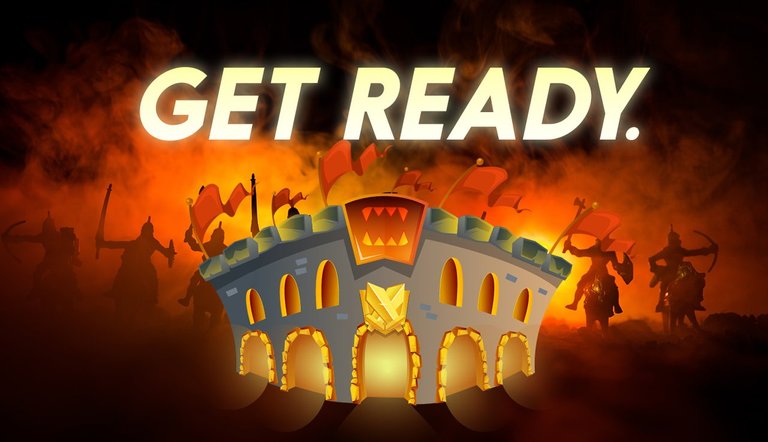
Historically, monster turn order was determined by:
- Speed (fastest monsters first)
- Attack type (magic monsters first, ranged monsters second, melee and peaceful monsters both last)
- Randomly determined if both speed and attack type were the same
In most situations, going first is an advantage because your monsters can attack and deal damage before they are killed and you may be able to kill your opponent's monsters before they are able to attack. This gives you "tempo", a concept used in other strategic games.
On May 11th, 2020, two new tiebreakers were announced:
https://peakd.com/splinterlands/@splinterlands/announcing-anytime-tournaments
Currently if two Monsters have the same attack type and the same Speed, the order in which they attack each round will be randomly determined. This leads to additional randomness in battles, which can be frustrating, and can also create some odd behaviors with the Stun ability in particular.
In order to help reduce this occurrence, we will be adding two additional factors in determining move order - Rarity and Level. Now, if two or more cards have the same attack type and Speed, the higher rarity card will go first. This means that a Legendary card will go before an Epic card, and then Rare, and Common. If the cards are the same rarity, then the higher level card will go first (level is determined after taking into account Summoner & League level limits).
Finally, if the cards have the same attack type, speed, rarity, and level, the move order will still be determined randomly.
This change will apply to ALL battles - tournament, ranked, practice, etc.
Please note that the "Reverse Speed" ruleset simply uses the reverse of the normal move ordering, so in that ruleset the lower rarity or lower level card will go first.
Although the application of these new tiebreakers may be subtle, the strategic implications are enormous. This strategy article looks at some of the main Winners and Losers from this fundamental rule change.
WINNERS
- Legendary Monsters
- Healers and Support
- Bots
- Whales
- Epic Summoners
LOSERS
- Common Monsters
- Enraged Monsters
- Strategically Choosing Lower Level Monsters
- Newbies & Minnows
- Speed Enhancers
Winner #1. Legendary Monsters
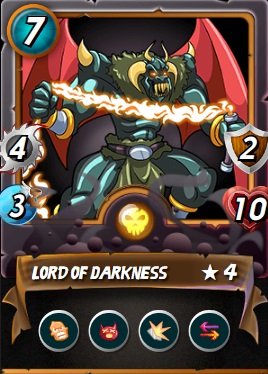
Since Legendary monsters get to go before Epic, Rare, and Common monsters of the same speed and attack type, this is a significant advantage for many Legendary monsters.
It is most relevant for melee monsters. Melee monsters are often going head-to-head with other melee monsters and being able to attack first is often critical in determining the victorious tank. If monsters with Stun (Frost Giant, Lord of Darkness, Dragon Jumper, Chain Golem) get to attack first, they can stun their opponent before their opponent can attack. Monsters with Healing (Sacred Unicorn and Hydra) will be able to get their turn in and heal before the opponent's tank can attack. And this also improves the chances of Taunting Magnor and Kraken being able to get a big attack in before all of the consolidated attacks bring them down.
Beyond melee monsters, even ranged and magic monsters benefit from going first. Elemental Phoenix, Ruler of the Seas, Kron the Undying, Gold Dragon, and Cornealus have speeds that are quite common for ranged/magic monsters so being able to go first due to rarity is quite important.
This also helps most Life Leech monsters. Apart from the fast Common Vampire, all of the other current Life Leech monsters are slow, Legendary, and are initially vulnerable with very little health. Being able to go just a little bit faster can vastly improve their survival rate.
And for support monsters with Tank Heal (Angel of Light and Corrupted Pegasus) and Triage (Scale Doctor), being able to go faster means they can help save their fellow monsters. For example, Angel of Light is guaranteed to take their turn and use Tank Heal before any Speed 1, melee or peaceful monster of Epic, Rare, or Common rarity. In the old system it was more random whether Angel of Light would be able to heal in time.
Winner #2. Healers and Support
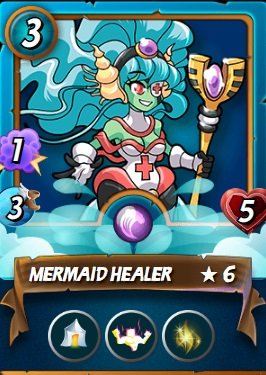
Beyond just Legendary monsters, most healers and support monsters benefit from these new tiebreakers.
Self-healing monsters like Earth Elemental, Haunted Spirit, Cerberus, and Water Elemental will get to have their turn and heal before any Common monsters with the same speed and attack type.
A more consistent (and less random) turn order means you can better plan out your Tank Heal (Wood Nymph, Beetle Queen, Khmer Princess, and Tortisian Chief) and Triage (Mermaid Healer and Kelp Initiate). For example, the Mermaid Healer is often paired with the Ruler of the Seas, who has the same speed. Under the old system, it was random each turn whether the Mermaid Healer or the Ruler of the Seas would attack first. If they faced Magic Reflect, this sometimes means that the Ruler of the Seas could die if it goes second (after the Mermaid Healer) on one turn and then goes first (before the Mermaid Healer) on the next turn. Now with the rarity tiebreaker, your Ruler of the Seas will always go before your Mermaid Healer, which gives you greater consistency for Triage.
The clearer turn order also lets you plan out your Cleanse with monsters like Silvershield Bard and Truthspeaker. These are both melee or peaceful monsters of Rare rarity. If paired with a Common melee tank with the same speed, under the old system it would be random whether your Bard/Truthspeaker would have its turn first and Cleanse your tank of Stun but with the new tiebreaker you know they will have their turn before such a Common tank.
Winner #3. Bots
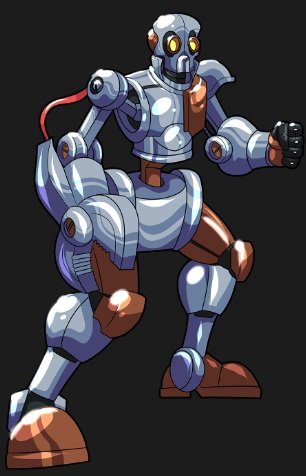
No, I don't mean Rusty Android, but I'm talking about bots in general. Bots get an advantage because of Reverse Speed + the UI interface.
The Reverse Speed ruleset is a counter-intuitive ruleset because faster and higher level monsters are now at a disadvantage instead of an advantage. Let's look at the Sea Monster for example. Under Reverse Speed, a Level 1 Sea Monster is better and gets to go before a Level 2 Sea Monster. A Level 4 Sea Monster is better than a Level 5 Sea Monster. And a Level 6 Sea Monster is better than a Level 7 Sea Monster. The same applies to lots of other monsters, such as Chain Golem and opportunity monsters such as Feasting Seaweed, Cave Slugs, Maggots, and Parasitic Growth. A lower level version is often much better in Reverse Speed. Take a look at this sample battle where lower level cards have the advantage in Reverse Speed:
https://splinterlands.com/?p=battle&id=sm_K7R6nj7OCQmh3qUPSFIk
Thanks to @jacekw for sharing this example from another Polish player.
So why doesn't everyone just keep a different copy for each level for each monster? Well you could but the standard UI interface makes things difficult. By default, the standard UI interface for humans only lets you select the highest level monster you have (though you can also select the highest level gold foil version of that monster, if that is a lower level). In contrast, bots using a custom JSON can simply submit whatever card ID they want so bots can more easily use monsters of lower levels. If a human has 10 Sea Monsters of Levels 1 through 10 and wants to use a Level 6 Sea Monster for one particular battle, it is cumbersome and time-consuming to use that specific card with the standard UI interface.
As a result, bots benefit the most from the new monster level tiebreaker because they can more easily select lower level monsters.
Winner #4. Whales
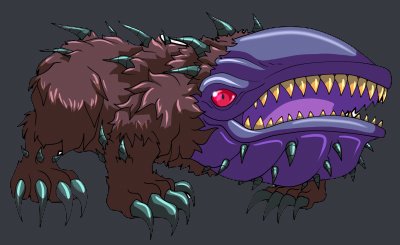
By "whale," I mean rich players with lots of resources and high level cards. All hail to the Whale Bear @randolphrope.
Since Splinterlands cards can be expensive, especially at the highest levels, the monster level tiebreaker also favors players with means, who are more likely to have optimal cards for the league in question.
For example, it's not uncommon for even some top players to settle for a Level 9 Kobold Miner or Centaur. Due to the exponentially increasing number of copies needed for each level advancement, it may not be worth it spending so much additional $$$ for just one extra health. But under the new system, a Level 10 Kobold Miner or Centaur will get to go before the Level 9 versions.
At the Bronze, Silver, and Gold league levels there are also plenty of players who are gradually building up their card bases so their card levels are below the league limits. The new system puts them under an additional disadvantage.
One final example of this are certain low mana "weenie" monsters where certain levels don't even offer a change in the stats. Albatross levels 1 vs 2, 3 vs 4, and 7 vs 8. Cursed Slimeball levels 1 vs 2 and 4 vs 5. Furious Chicken Levels 1 vs 2, 3 vs 4, and 5 vs 6. And although I think it's an error, Barking Spider Levels 4 vs 5. For most players, a 1 BCX Gold Chicken (which is Level 3) is sufficient. But under the new rules, in a Back to Basics game with Chicken vs Chicken tanks, having a higher level Gold Chicken which gets to attack first is an advantage that favors richer players.
Winner #5. Epic Summoners
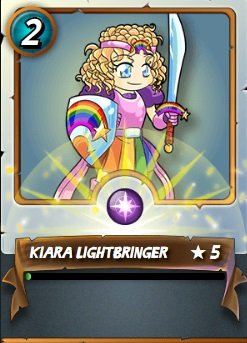
One commonly overlooked quirk of the game is that in Bronze league and Gold league, Epic summoners can use a higher level for Rare Monsters.
In Bronze league, Common/Rare/Legendary summoners can only use Level 2 Rare monsters while Epic summoners can use Level 3.
In Gold league, Common/Rare/Legendary summoners can only use Level 6 Rare monsters while Epic summoners can use Level 7.
If I had to guess, I think this was a deliberate design decision meant to give the original Epic summoners more strategic value since all of the initial ones (first introduced in Beta) are 2 mana summoners with no abilities.
So with the new monster level tiebreaker, this gives an advantage to Epic summoners using Rare monsters because they can be higher level and thus go first before the same monsters used by Common/Rare/Legendary summoners.
Loser #1. Common Monsters
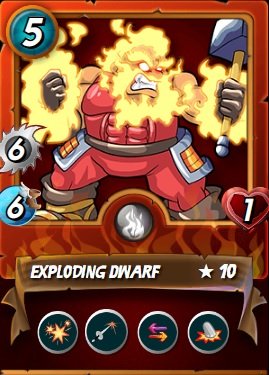
The biggest loser is easily the Exploding Dwarf, a fragile 1 health monster who relies on high speed for a devastating strike. With the new rarity tiebreaker, rarer monsters with the same speed like Serpentine Soldier and Serpent of the Flame will get to attack before the Exploding Dwarf (though at least he still gets a chance to Retaliate before dying).
Common tanks like Sea Monster, Flesh Golem, and Goblin Mech are hurt. Even Sneak and Opportunity monsters like Kobold Miner, Serpentine Spy, Saber Shark, Goblin Thief, Screeching Vulture, Feral Spirit, Skeleton Assassin, Undead Badger, and Elven Cutthroat are at a disadvantage compared to rarer monsters like Dragon Jumper or Fiendish Harpy. Similarly, in the case of common ranged and magic monsters, they now go after rarer monsters with the same speed and attack types.
Loser #2. Enraged Monsters
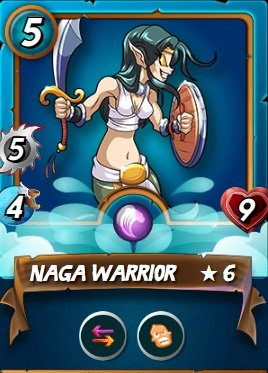
Stunning Enraged monsters (Lord of Darkness and Pit Ogre) generally benefit from the rarity tiebreaker because they want to go first. For Enraged monsters with armor (Stonesplitter Orc and the Reaching Grumpy Dwarf) they typically aren't reliant on becoming enraged from the other tank's attack. Taunting Enraged monsters (Magnor and The Kraken) usually get enraged from a ranged or magic attack.
However, armorless Enraged monsters like Naga Warrior, Raging Impaler, and Chromatic Dragon are slightly hurt by this new rule change. Note that these monsters all have speeds in the range of 3-4. When faced with an opposing tank like Flesh Golem or Haunted Spirit, under the old rules it was 50/50 which monster would go first. Ideally, the Flesh Golem / Haunted Spirit would attack first, damaging and enraging your monster so then you could strike back with the damage bonus. But under the new rarity tiebreaker rules, these Enraged monsters will attack first, often in their un-enraged state.
Loser #3. Strategically Choosing Lower Level Monsters

There are some situations where players will intentionally choose to keep their monsters at lower levels because they prefer those card stats. This is most common when higher level monsters lose health (Fire Beetle, Serpentine Spy, Spineback Turtle, Pirate Captain, Earth Elemental) or when monsters mainly used for Reverse Speed gain speed (or "equivalent speed" like Quickness/Slow) at higher levels (Frost Giant gaining Slow at Level 3 being the best example). Under the old rules, the lower level monsters were still tied in speed so it was 50/50 who would go first but under the new tiebreaker rules, the lower level monsters will go second.
Loser #4. Newbies & Minnows
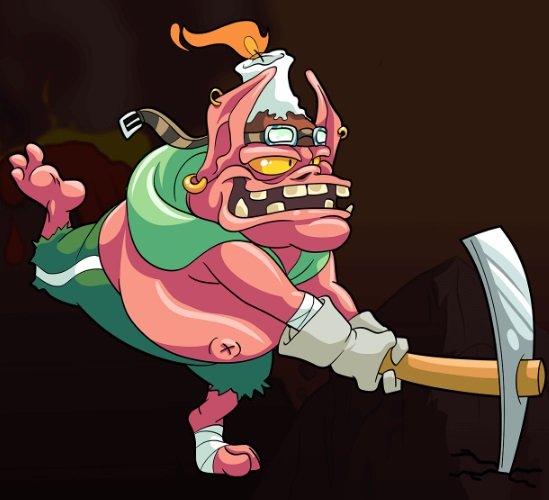
As the counterpart to the "Winner #4. Whales" point, newer players and those with more limited means tend to have cheaper, more common, and lower level cards. So the new tiebreakers put them at an additional disadvantage.
The best example of this is the Back to Basics ruleset which removes all monster abilities. Since this reduces a lot of randomness and strategy, it also means that card/collection value has heightened importance. Not having key summoners (like Yodin Zaku, Mimosa Nightshade, Prince Rennyn, Valnamor, or Selenia Sky) is often an auto-lose, as is not having certain key monsters (like Peaceful Giant) at high levels. The new tiebreaker rules advantage whales and disadvantage newbies and minnows in two ways. Under the old system, lower level cards which had the same speed still had a 50/50 chance of going first but under the new system the higher level cards will always go first. Secondly, whales have access to a wider range of cards. In Back to Basics, there will be many situations where, with the monster abilities removed, several monsters have the same stats for the same mana cost. Whales will have access to Epic and Legendary versions which will go first over Common and Rare equivalents.
The one exception to new players and minnows being disadvantaged is the Reverse Speed ruleset where their lower level cards can actually turn out to be an advantage.
Loser #5. Speed Enhancers
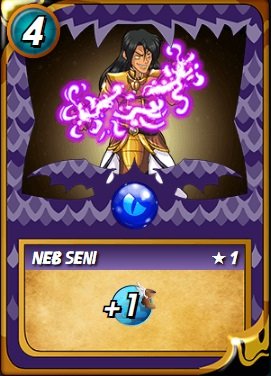
Speed Enhancers include summoners with speed buffs (Pyre, Plado Emberstorm, Valnamor, Prince Rennyn, and Neb Seni), summoners with speed debuffs (Cryptmancer), and monsters with the Quickness or Slow abilities.
Since you can't change the attack forms of monsters, under the old system, speed enhancers were the main way to improve your chances of going first.
But now that there are alternative factors to consider (rarity and monster level), speed enhancers are slightly less important. This is especially true if your opponent has an incomplete collection and more limited options. There will be cases where you can predict you will go first without that extra speed enhancer, which is no longer necessary.
Conclusion
Although a lot of players haven't really paid attention to the new rarity and monster level tiebreakers, they actually have far-reaching implications and add a new strategic layer to leveling up your collection and selecting your teams. However, as with most changes, there are both winners and losers and it is important to understand both sides.
Really insightful and well considered, thankyou. I hadn't realised the way such a subtle change can have such a large effect.
One implication I noticed immediately, is that I love to use Frost Giant in Reverse Speed but as a legendary, any other 1 speed melee card will now go first.
Exploding Dwarf may not be as nerfed as you might expect.
If (rare) Electric Eels go first, reaching from second position, and Dwarf retaliates, he can do a lot of damage to a squishy card in third.
Hhehee I just experienced this in my recent battle. Very nice and very helpful post thanks byza
What a detailed break-through. I wasn't aware of it having such a big impact.
Proves that I still have a whole lot to learn about the game me mechanics 😂
Thank you for the detailed post. Looking forward to learning more from you!
Congratulations @byzantinist! You have completed the following achievement on the Hive blockchain and have been rewarded with new badge(s) :
You can view your badges on your board And compare to others on the Ranking
If you no longer want to receive notifications, reply to this comment with the word
STOPTo support your work, I also upvoted your post!
Do not miss the last post from @hivebuzz:
Support the HiveBuzz project. Vote for our proposal!
a good read, thanks
after taking into account Summoner & League level limits. Does this mean a champ 1 goes before a champ 2 etc, if all else the same?
Another awesome Splinterlands post! ~@clove71

Fantastic post, i learned a lot!
Very interesting read, for me as I am still new to Splinterlands!!